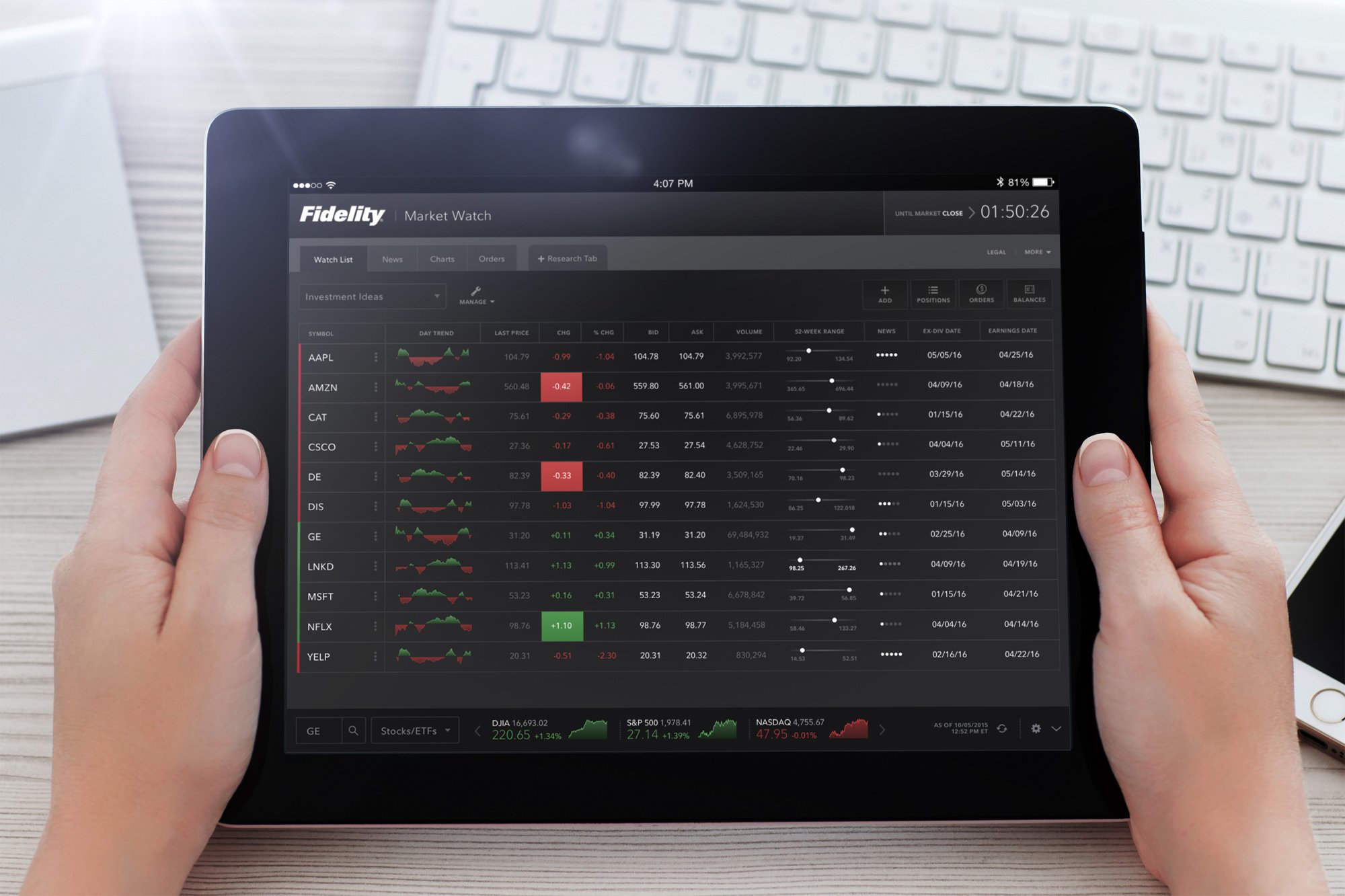Fidelity Investments
Fidelity’s online trading platform, ATP Pro, was scheduled to sunset. Our goal was to create, not only a viable alternative, but a dramatically-improved experience for our users.

Overview
In 2016, Fidelity’s online trading platform, ATP Pro, was scheduled to sunset at the end of the year. Our goal was to create, not only a viable alternative, but a dramatically-improved experience for existing users of ATP Pro and Fidelity.com investors.
UXD formed a vision team to conduct an initial R&D effort, before bringing in dedicated staff. The team looked to identify high-opportunity areas to improve and innovate within the customer’s online trade experience at Fidelity. I joined the vision team during the design phase of this process to help explore solutions, provide visual-design support, and ultimately lead the design during execution.
Research and Discovery
During the initial discovery phase, the team mapped out users’ trade journeys, defined the target customer archetype, and conducted user interviews with employees and customers who were sophisticated traders. The objectives included validating the target customer and their trade journey, as well as identifying trends in trading behavior and tasks customers perform at each stage of the journey. The team also wanted to understand what data and tasks could benefit from being grouped together.
During user interviews, we learned that users’ monitoring experiences centered around their watch lists and positions list. Based on feedback, we also understood that not everything needed to be on the same screen, but important information and capabilities should be clearly accessible within one-click. Finally, we believed that layering in alternative views to track watch list items could enhance a user’s experience. As the team began exploring solutions, we identified five critical design principles to align our focus.
Remove barriers to access.
Bring related capabilities together.
Strive for one-click access to the supporting data that customers need.
Don’t cause customers to lose context.
Integrate the benefits of our existing monitoring product into the Fidelity.com experience.
Competitive Analysis
We reviewed E-Trade, E-Trade 360, Merrill Edge, TD Ameritrade, Schwab, and Scottrade products. Conceptual takeaways during this process included leveraging progressive-disclosure techniques to view more information only when needed, customizable watch lists, alternate watch-list views, docked components, rich interactive menus, research snapshots, and heat maps.

Validation, Design, Testing
After several rounds of brainstorming, sketching, iterating, and informal testing, we began designing. We focused on three core features that would define the MVP: an enhanced watch list and positions grid, integrated research tabs, and a docked trade ticket with markets and account information.
We also identified alternate views including a heat map, charting grid, advanced-charting capabilities, as well as detailed news and events to be developed downstream. Other features we explored were tear-away components, a pre-login experience to reduce barrier to entry, a market clock, enhanced support for pre-trade and post-trade monitoring, and email reports.
By week seven, we were ready to test our initial concepts with an ATP customer panel using an interactive Axure simulation. The team hoped to understand which concepts resonated with existing users, and if any of the proposed concepts could serve as a stop-gap once ATPro.com was decommissioned. After validating monitoring as the product’s focus, and having obtained critical feedback, we began refining the next round of designs. By week ten we were confident enough to begin building high-fidelity designs and prototypes.
Overcoming Challenges
Our team experienced several set backs. Our biggest challenge was that the project had fallen significantly behind schedule during execution. Both business owners and executives considered shutting the project down, and interpersonal issues within the team had reached a tipping point. I was asked to take over and understood that we needed to move quickly. Stepping back from the IA and visual design, I focused on leadership and project management, as well as enlisting additional resources. I scheduled meetings with individual team members to understand their concerns, mediating between parties as needed. I also met with our business partners, focusing on clear expectations and transparent communication. After 6-8 weeks with a new process in place, the team dynamic had healed and the project was back on schedule.

The Final Result
We continued to perform lab studies regularly with the dedicated Fidelity testing team to ensure decisions were validated as portions of the new monitoring experience were released Fidelity.com users. The final result was a clean, modernized, and significantly-improved experience. It also offered Fidelity the opportunity to decommission ATPro.com with confidence. The design I contributed to set the foundation for a scalable, successful product as part of Fidelity’s core trade offerings.

